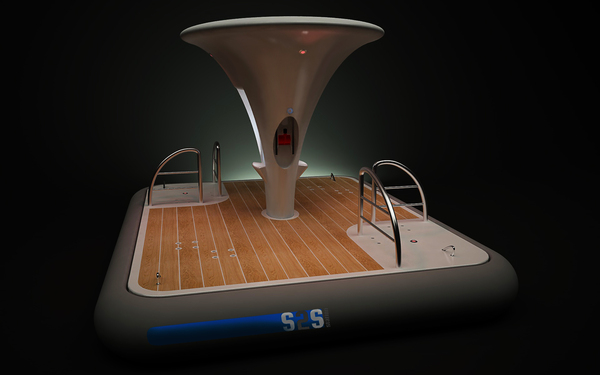It is a well known fact that boats, ships and yachts use a huge amount of energy in order to navigate, to power the engine, desalinate and also to provide sewage system to the ship and in order to make sure that the crew and passengers have access to drinking water.
Drinking water while on the ship can become the most important commodity as in the deep sea it is impossible to have access to fresh water supplies. Thus, most ships have desalinating equipment which use sea water and process it to make it potable. However, the process of desalination consumes a lot of electricity. Patrizia Ranzo is a designer who has just unveiled her thesis project that dwells on the topic of using tidal power to desalinate sea water. The S2S project involves the installation of BioStream, which harnesses the perpetual tidal power, and convert it into electricity.
Each of the BioStream installations can generate 1 MW, which can be used at the S2S stations on the surface of the water to desalinate ocean water and make it potable enough. Moreover, these S2S stations also provide valuable weather-related data and logistical information to boats and ships with the help of touchscreen technology. The project aims to cover the whole of Gulf of Campania with just 20 of these BioStream installations. These installations in turn would allow boat-sharing, supply water to ships and also provide valuable weather information as mentioned earlier.
The designer has not given any more information, but it looks like a great way to use tidal power and harness this renewable energy to process salty sea water and act as a standalone station in the middle of the sea. You could also take a look at the journey of a Robotic Boat, which completed a 60,000 kilometer voyage. While we are at it, the FLIP Research Vessel is a great way to understand maritime technology as well.













